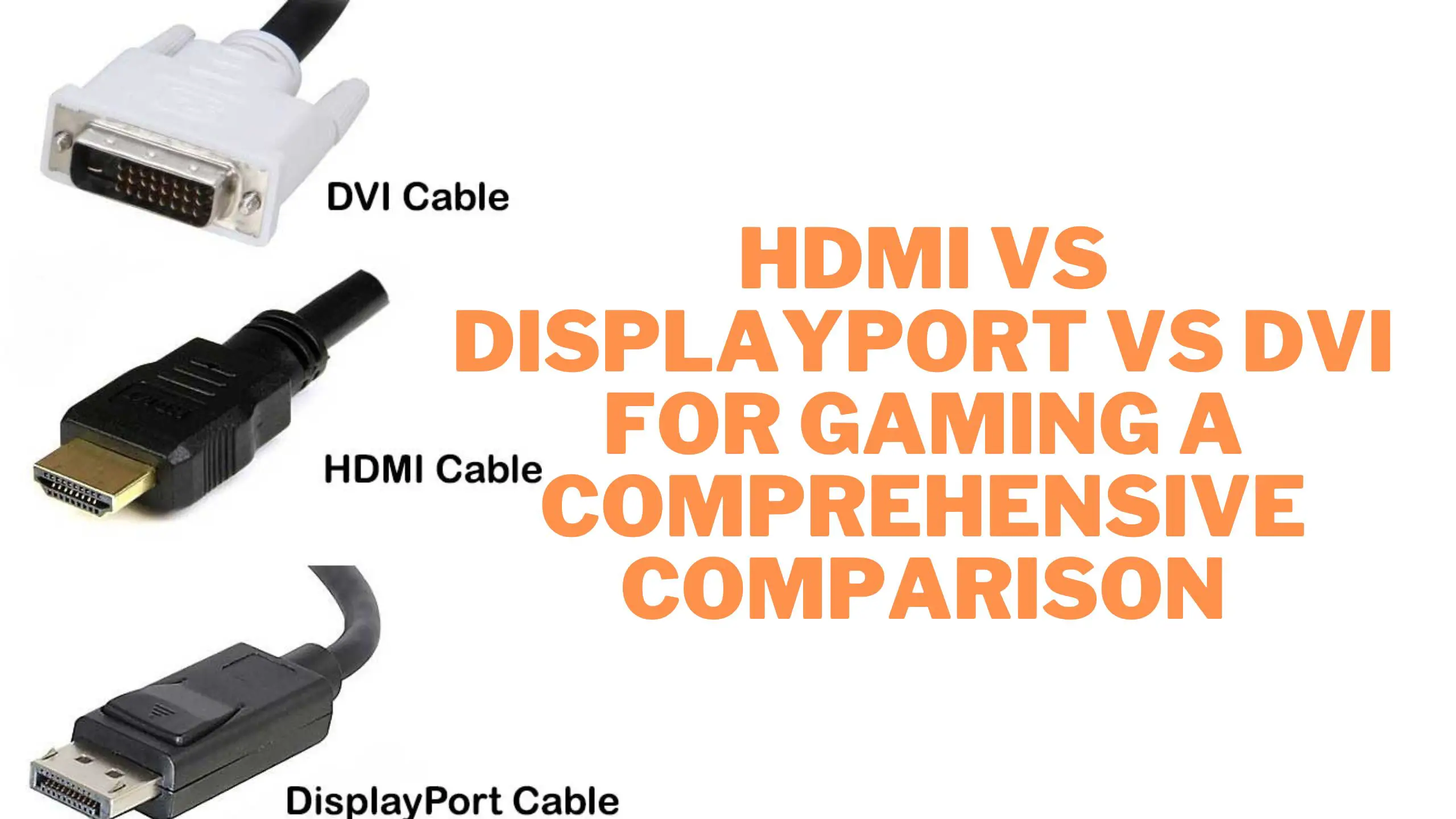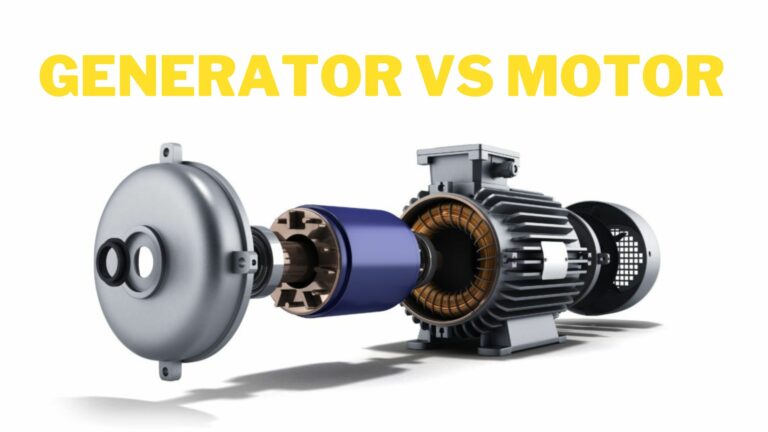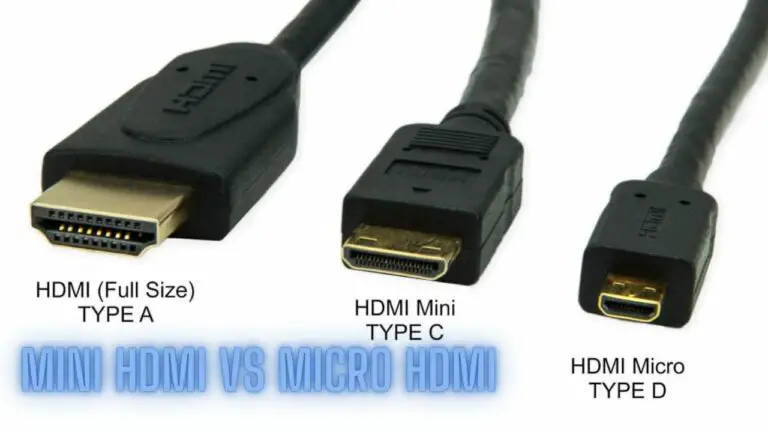HDMI vs DisplayPort vs DVI for Gaming A Comprehensive Comparison
Introduction
In the realm of gaming, the visual experience is paramount. The choice of a suitable display interface plays a pivotal role in delivering an immersive gaming experience. HDMI (High-Definition Multimedia Interface), DisplayPort, and DVI (Digital Visual Interface) are the primary connectivity options available to gamers. Each interface comes with its unique set of features, advantages, and limitations. Understanding the differences among them is crucial in making an informed decision regarding the best choice for gaming setups. In this article, we will talk about HDMI vs DisplayPort vs DVI for gaming a comprehensive comparison.
Understanding HDMI, DisplayPort, and DVI
HDMI (High-Definition Multimedia Interface)
HDMI has become ubiquitous in the digital entertainment world due to its widespread adoption across various devices like televisions, monitors, gaming consoles, and computers. It supports high-definition audio and video transmission through a single cable, offering convenience and versatility. HDMI versions have evolved over time, with each iteration bringing improvements in bandwidth and capabilities.
DisplayPort
Developed by VESA (Video Electronics Standards Association), DisplayPort is a high-performance digital interface primarily designed for computer monitors and high-resolution displays. It provides superior bandwidth capabilities, enabling support for higher resolutions, refresh rates, and multiple monitor setups through a single cable. DisplayPort also supports adaptive sync technologies like AMD FreeSync and NVIDIA G-SYNC, enhancing gaming visuals by reducing screen tearing and stuttering.
DVI (Digital Visual Interface)
DVI was once a prevalent display interface standard before HDMI and DisplayPort gained widespread popularity. It comes in different variations, including DVI-I (integrated – supporting both digital and analog signals), DVI-D (digital-only), and DVI-A (analog-only). While DVI was known for its compatibility with older monitors and graphics cards, its limitations in supporting higher resolutions and refresh rates compared to HDMI and DisplayPort have become more apparent in modern gaming setups.
Key Factors for Gaming
Bandwidth and Resolutions
One of the critical aspects for gamers is the ability of the interface to support high resolutions and refresh rates. HDMI, depending on its version, can handle various resolutions, including 4K and even 8K in the latest iterations. DisplayPort, particularly in its recent versions, boasts higher bandwidth capabilities, making it more suitable for driving high-resolution displays, multiple monitors, and ultra-high refresh rates commonly sought after by serious gamers.
Refresh Rates and Adaptive Sync Technologies
Gamers often prioritize high refresh rates for smoother gameplay. DisplayPort typically offers better support for high refresh rates compared to HDMI and older DVI versions. Moreover, DisplayPort’s compatibility with adaptive sync technologies like FreeSync and G-SYNC can significantly improve gaming experiences by synchronizing the display’s refresh rate with the graphics card’s output, reducing screen tearing and input lag.
Audio and Additional Features
While HDMI is known for its ability to transmit high-quality audio along with video, DisplayPort and DVI primarily focus on video transmission. HDMI simplifies the setup by carrying both audio and video signals through a single cable, making it convenient for gaming consoles and home theater setups.
Compatibility and Future-Proofing
Consideration for backward compatibility and future-proofing is crucial when choosing a display interface. HDMI has wide compatibility with various devices, making it a standard choice for gaming consoles, TVs, and computers. DisplayPort, with its emphasis on higher bandwidth and newer features, is often found on gaming monitors and high-end graphics cards. DVI, while still available on some older hardware, lacks the capabilities to support modern high-resolution and high-refresh-rate displays efficiently.
FAQS
What are HDMI, DisplayPort, and DVI?
HDMI (High-Definition Multimedia Interface): It’s a standard for transmitting uncompressed video and audio data from an HDMI-compliant source device to a compatible monitor, TV, or other digital display.
DisplayPort: Similar to HDMI, DisplayPort is another digital display interface primarily used to connect a video source to a display device, offering high-definition video and audio.
DVI (Digital Visual Interface): It’s an older video display interface used to connect a video source, such as a graphics card, to a display device like a monitor, TV, or projector.
Which is better for gaming: HDMI, DisplayPort, or DVI?
DisplayPort: Generally considered the best choice for gaming due to its higher bandwidth, which allows for higher resolutions, refresh rates, and support for adaptive sync technologies like AMD FreeSync and NVIDIA G-SYNC.
HDMI: HDMI is also suitable for gaming and supports high resolutions and refresh rates, but earlier versions might have limitations compared to DisplayPort, especially in terms of adaptive sync.
DVI: While it can handle gaming at lower resolutions and refresh rates, it’s becoming less common and doesn’t support newer technologies like adaptive sync.
What about compatibility and availability?
HDMI: Widely available on most gaming monitors, TVs, and graphics cards. It’s highly compatible with a broad range of devices.
DisplayPort: Commonly found on gaming monitors and high-end graphics cards, offering excellent compatibility with newer displays.
DVI: Becoming less prevalent in modern gaming monitors and graphics cards, particularly the older DVI-A and DVI-I standards.
Do these connections affect gaming performance?
Generally, the choice of connection won’t significantly impact gaming performance unless you’re aiming for higher resolutions, refresh rates, or adaptive sync technologies. In those cases, DisplayPort might offer a slight advantage due to its higher bandwidth.
Can I use adapters or converters between these interfaces?
Yes, adapters or converters are available to connect devices using different interfaces (e.g., HDMI to DisplayPort, DisplayPort to HDMI). However, some functionalities like higher refresh rates or specific technologies might not work through adapters due to differences in supported features among the interfaces.
What should I consider when choosing between these connections for gaming?
Factors to consider include the capabilities of your gaming monitor or display, the output options of your graphics card, the desired resolution and refresh rate, support for adaptive sync technologies, and the availability of the specific interface on both devices.
Conclusion
In the realm of gaming, the choice between HDMI, DisplayPort, and DVI largely depends on individual preferences, system requirements, and the specific gaming setup. HDMI offers versatility and widespread compatibility, making it a suitable choice for many gamers seeking a straightforward setup. DisplayPort, with its superior bandwidth and support for advanced features, appeals to enthusiasts craving high resolutions, refresh rates, and adaptive sync technologies. DVI, although less commonly used in modern gaming setups, might still find relevance in older hardware or specific monitor connections.








